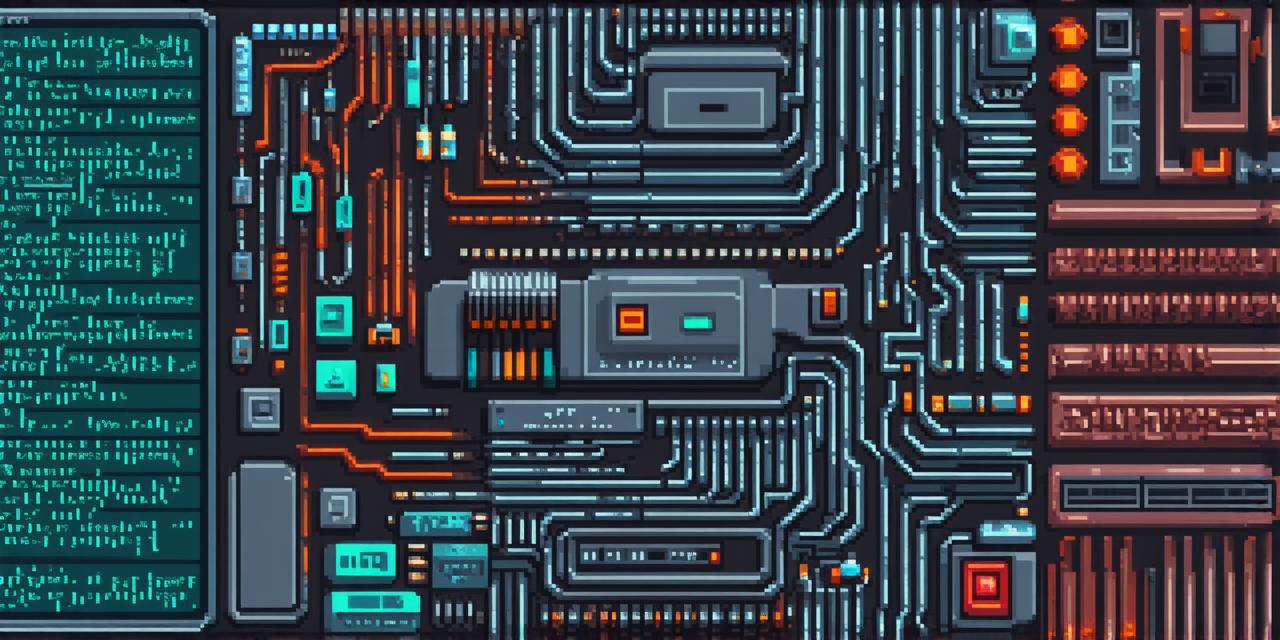If you are an aspiring game developer and want to learn how to code a video game, this article is for you. In this guide, we will take you through the process of coding a video game from scratch, including selecting a programming language, designing the game mechanics, writing the code, testing the game, and deploying it. We will also discuss some best practices and tips for creating engaging and fun games.
1. Choose a Programming Language
The first step in coding a video game is to choose a programming language. There are many programming languages that can be used for game development, but three of the most popular are C++, Unity, and Unreal Engine.
C++ is a low-level programming language that provides developers with more control over the hardware. It is often used in games that require high performance, such as first-person shooters and racing games. However, C++ can be difficult to learn and requires a strong understanding of programming concepts.
Unity is a cross-platform game engine that allows developers to create games for multiple platforms, including Windows, Mac, iOS, Android, and consoles. Unity uses C as its primary programming language, making it a popular choice for beginners. It also has a large community of developers who provide resources and support.
Unreal Engine is another powerful game engine that allows developers to create games for multiple platforms. It uses C++ as its primary programming language, providing developers with more control over the hardware. Unreal Engine is often used in games that require complex graphics and physics, such as action-adventure games and open-world games.
2. Design the Game Mechanics
Once you have chosen a programming language, the next step is to design the game mechanics. This involves determining how the game will be played, what the objectives are, and how the player will interact with the game world.

Before you start coding, it’s important to have a clear idea of the game mechanics. This will help you to stay organized and focused as you begin to write the code. You can use flowcharts, diagrams, or even play the game yourself to help you design the mechanics.
One example of a successful game with well-designed mechanics is Minecraft. The game allows players to build and explore a blocky world, making it easy for beginners to understand and enjoy.
3. Write the Code
Once you have designed the game mechanics, it’s time to start writing the code. Depending on the programming language you choose, this may involve using an Integrated Development Environment (IDE) or a text editor.
When writing the code, it’s important to keep in mind best practices such as naming variables and functions clearly, commenting your code, and using modular design. This will make it easier for other developers to understand and modify your code in the future.
One example of well-written code is the source code for the popular open-source game engine, GIMP. The code is well-documented and easy to read, making it a great resource for beginners.
4. Test the Game
Once you have written the code, it’s important to test the game thoroughly to ensure that it works as intended. This involves testing the game on different platforms and devices, and checking for bugs and errors.
Testing can be a time-consuming process, but it’s essential to ensure that the game is fun and engaging for players. One way to speed up the testing process is to use automated testing tools, which can quickly identify and fix common issues.
One example of a game that was thoroughly tested before release is Fortnite. The game underwent extensive testing and beta testing before it was released, ensuring that it was bug-free and ready for players.
5. Deploy the Game
Once you have tested the game and are satisfied with its performance, it’s time to deploy it on the desired platforms. This may involve uploading the game files to a server or using a distribution service like Steam.
When deploying the game, it’s important to consider the target audience and choose the right platforms.
